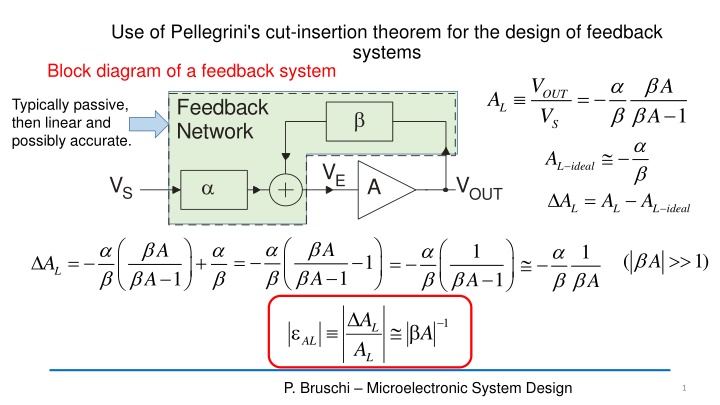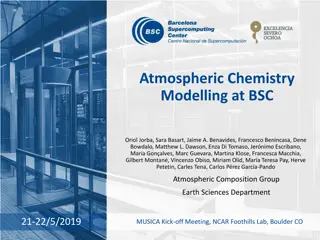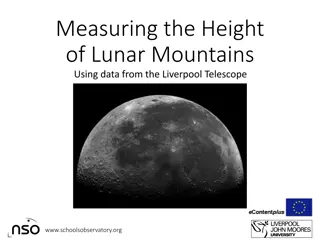Lunar Atmospheric Composition Experiment: Insights into Moon's Atmosphere
The Lunar Atmospheric Composition Experiment (LACE) on Apollo 17 provided valuable data on the Moon's exosphere, gas molecules, and atmospheric dynamics. LACE's ionization process, mass range scans, and data records offer a deeper understanding of lunar atmospheric composition. Discover the impacts of moonquakes and meteoroids on the Moon's atmosphere, and explore the intricate workings of LACE in unraveling the mysteries of the lunar exosphere.
Download Presentation

Please find below an Image/Link to download the presentation.
The content on the website is provided AS IS for your information and personal use only. It may not be sold, licensed, or shared on other websites without obtaining consent from the author.If you encounter any issues during the download, it is possible that the publisher has removed the file from their server.
You are allowed to download the files provided on this website for personal or commercial use, subject to the condition that they are used lawfully. All files are the property of their respective owners.
The content on the website is provided AS IS for your information and personal use only. It may not be sold, licensed, or shared on other websites without obtaining consent from the author.
E N D
Presentation Transcript
Use of Pellegrini's cut-insertion theorem for the design of feedback systems Block diagram of a feedback system a b b b OUT V V A = A Feedback Network Typically passive, then linear and possibly accurate. L 1 A b S a b L ideal A VE VS VOUT a A = A A L ideal A L L a b b a b b a b a b A a b b A 1 A 1 b = ( 1) A = + = 1 A L b b b 1 A 1 A 1 A A 1 b L A AL A L P. Bruschi Microelectronic System Design 1
Passive network: linear and reliable In a real electronic network: ? Feedback Network b VE VS VOUT a A Desired correspondence a b a b N N V V = out A A OL in Separation of feedback network and gain element (AMP) P. Bruschi Microelectronic System Design 2
Problems that prevent a direct correspondence between the electrical circuit and the simplified block diagram of a feedback system Loading effects of the feedback network on AMP Loading effect of the amplifier input impedance on the feedback network Direct signal path from the input signal VSand the output voltage through the feedback network (occurs if the amplifier has a non-zero output impedance). P. Bruschi Microelectronic System Design 3
Pellegrini's cut-insertion theorem A b a now are calculated taking into account loading effects takes into account the feed-forward path through the feedback network , , Z p v i a v v 1 1 Z ( ) p = b = = + b ; ; out v Z A r 1 A i v Z p i p out p = 0 v = = 0 0 v v s s s i v v v v is zero if the op-amp is unidirectional p = a = ; out v r s s s = = = 0 0 0 v v v p p p P. Bruschi Microelectronic System Design 4
Block diagram corresponding to the cut-insertion schematization a b b b v A a b = = out v A L 1 A s = = lim A b L ideal A A L a b b a b b v A = = + out v A L 1 A s = + lim A b A L Ideal feedback system P. Bruschi Microelectronic System Design 5
Problems when using the cut-inserion theorem for design purposes 1. I have to design the feedback network for three transfer functions (a b and ) instead of only two. 2. a and depend on the output impedance of the amplifier, Zout, which is a parameter that varies much and cannot be predicted reliably. 3. Only in the case that Zoutis much smaller than the typical impedances of the feedback network, we can design the network for a b and ) with port "O" short circuited ( =0). Typically, this does not occur in integrated circuits. a b v = + out v s Configuration for a , Zout P. Bruschi Microelectronic System Design 6
Cut insertion theorem with modified definition of a a (and b) If AMP communicates with the feedback network only through the input and output ports (no intermediate signal path exists between them) ...... then * b b = Place an ideal voltage source at the output Introduce a new definition of a and b (renamed a* and b*) and: a b * v A = + out v v a b * * ; r r b b b 1 1 v A A v v s s o = = , 0 , 0 v v v v p o p s P. Bruschi Microelectronic System Design 7
Cut insertion theorem with modified definition of a The definition of a* is deeply different from that of a. Also the definition of b* is different from that of b. but the two values coincides in most practical cases. a* and b* are very similar to aNand bNthat are the functions for which we design the feedback network a b * Now is divided by the loop gain bA v A = + out b b b 1 1 v A A s a b a b * * v = = lim A b out v * s P. Bruschi Microelectronic System Design 8
Ideal transfer function and network functions a b a b * * v = = lim A b out v Feedback Network * O VO s Feedback Network O VO E Vr-ideal I VS Zp E I VS Vr = a + b r ideal V V V = a + b * * V V V N S N O r S O Z Z ( ) p = a + b V V V p a = a * r N S N O + Z Z N + Z Z a b a b * p e Z p e = Ze N Z * Z p p = a + b Vr-ideal V V V p b = b * N r N S N O + + Z Z Z Z N + Z Z p e p e p e Thevenin equivalent of port E P. Bruschi Microelectronic System Design 9
Finite gain error a b a b * a b b * 1 A = = N L ideal A = + A * L b 1 1 A N a b b b b * A = + A 1 A A = + L 1 L 1 1 A A b 1 L ideal A L ideal A = A A L ideal A L L 1 A = + 1 e L a b b b b a b * * A r b L ideal A A L ideal A = + A L 1 1 A A From the Schwarz inequality: a b b b * A 1 = + 1 A + 1 e L b 1 1 A A r b A L ideal A P. Bruschi Microelectronic System Design 10
Final recap a b a b * = = N L ideal A * N bN Feedback Network O VO E Vr-ideal Ze I VS Zin aN 1 Zo + 1 e r b A L ideal A Feedback Network Vout O Z + = o Z A VOL A Zout Zp E I Vr Z Z b = b = b * in + o out N Z Z in e P. Bruschi Microelectronic System Design 11


![get⚡[PDF]❤ Building Habitats on the Moon: Engineering Approaches to Lunar Settle](/thumb/21624/get-pdf-building-habitats-on-the-moon-engineering-approaches-to-lunar-settle.jpg)




















